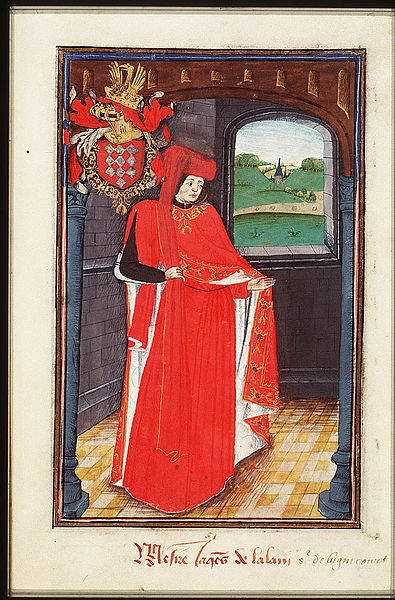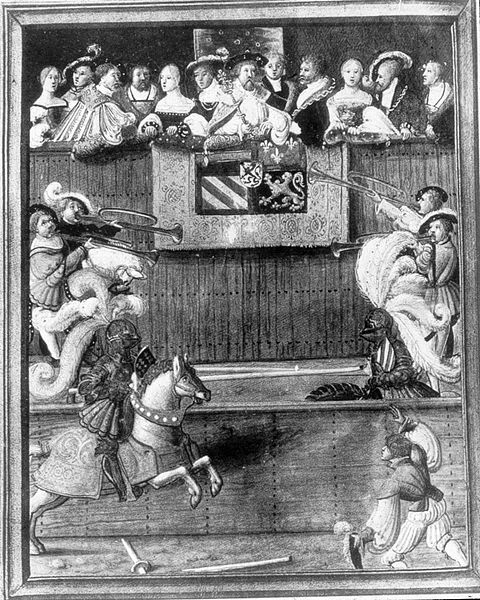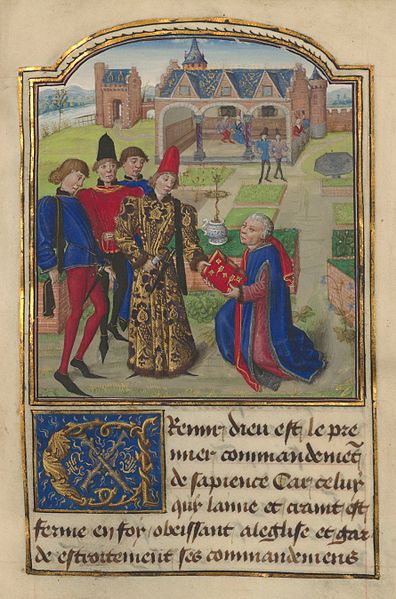Jacques de Lalaing (1421–1453), perhaps the most renowned knight of Burgundy in the 15th century, was reportedly one of the best medieval tournament fighters of all time. A Walloon knight, he began his military career in the service of Adolph I, Duke of Cleves, but was quickly noticed by Philip the Good, Duke of Burgundy by whom he was knighted and whom he went on to serve. Jacques, known as the "Bon Chevalier" due to his military prowess in tournaments and battles, became the most famous Burgundian knight of his time, and was well known throughout Europe as one of the best medieval tournament fighters. Jacques was inducted into the prestigious Burgundian chivalric order, the Order of the Golden Fleece, in 1451. Jacques' deeds in tournaments and battles were recorded in the Livre des Faits de Jacques Lalaing attributed mainly to the Burgundian chroniclers Jean Le Fevre de Saint-Remy, Georges Chastellain, and the herald Charolais. Throughout his life, Jacques was entrusted by the Duke of Burgundy to serve in delegations to the King of France and the Pope, as well as with the suppression of the Revolt of Ghent in 1453.

Jacques de Lalaing (1421–1453)
Jacques de Lalaing was one of the most accomplished knights with a lance and won numerous tournaments and pas d'armes bouts.
Jacques de Lalaing was killed by gunfire during the suppression of the Revolt of Ghent in 1453.
Georges Chastellain, Burgundian chronicler and poet, was a native of Aalst in Flanders. Chastellain's historical works are valuable for the accurate information they contain. As a poet he was famous among his contemporaries. He was the great master of the school of grands rhétoriqueurs, whose principal characteristics were fondness for the most artificial forms and a profusion of Latinisms and graecisms.
Charles the Bold accepting a book from Georges Chastellain, miniature in L'instruction d'un jeune Prince.




